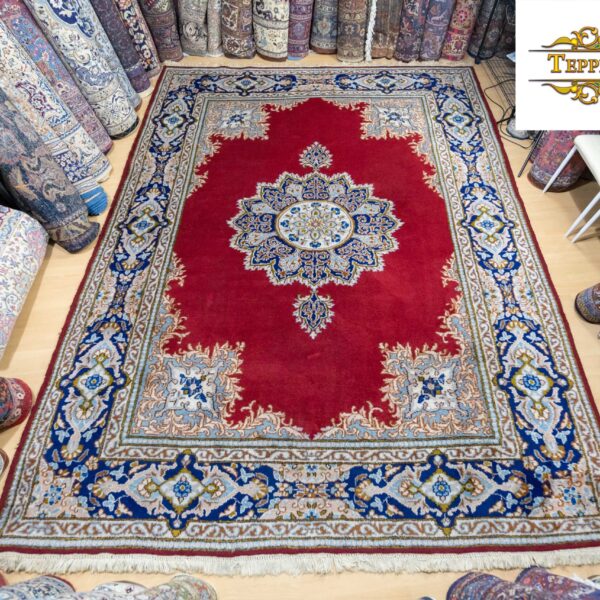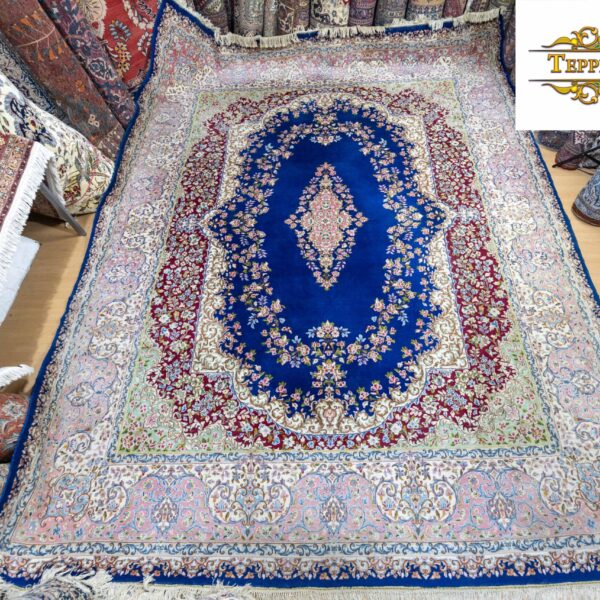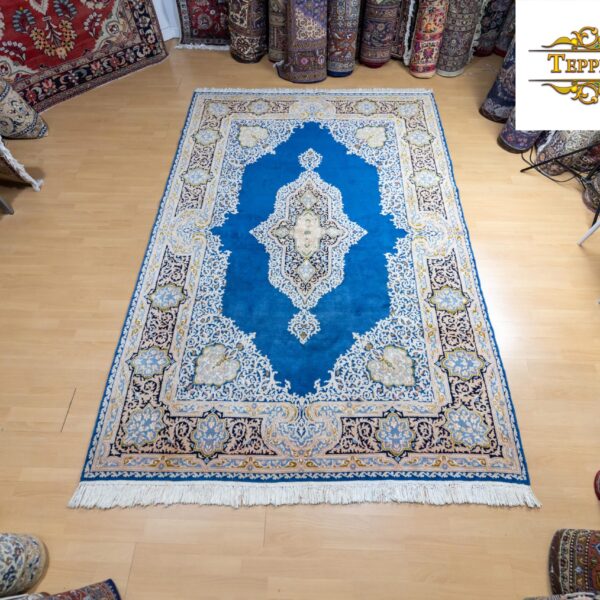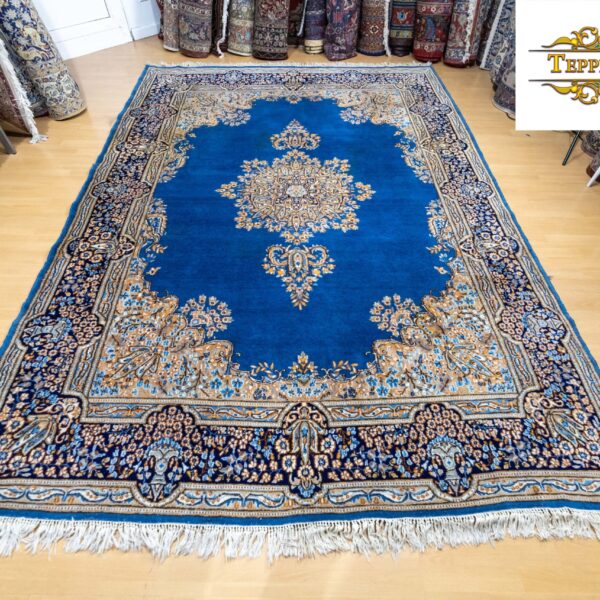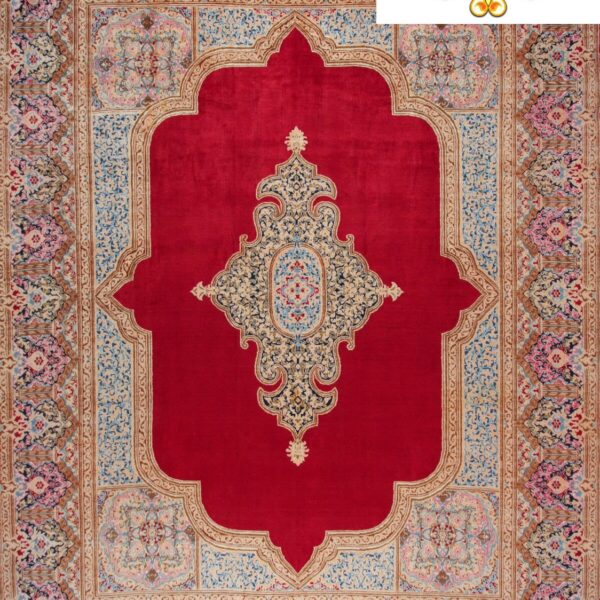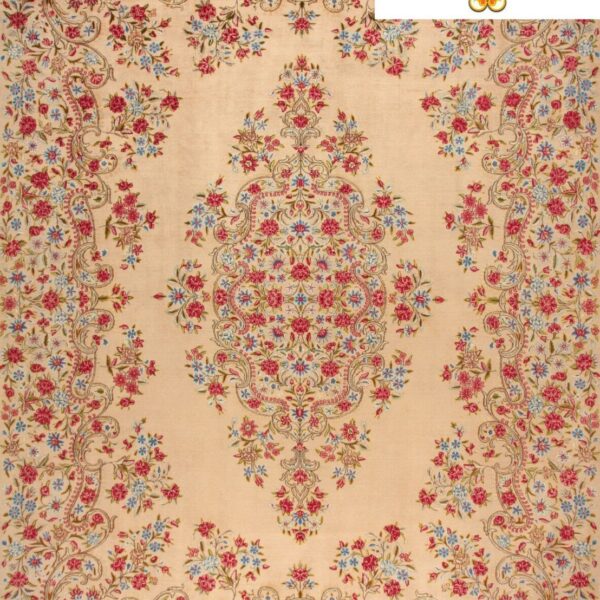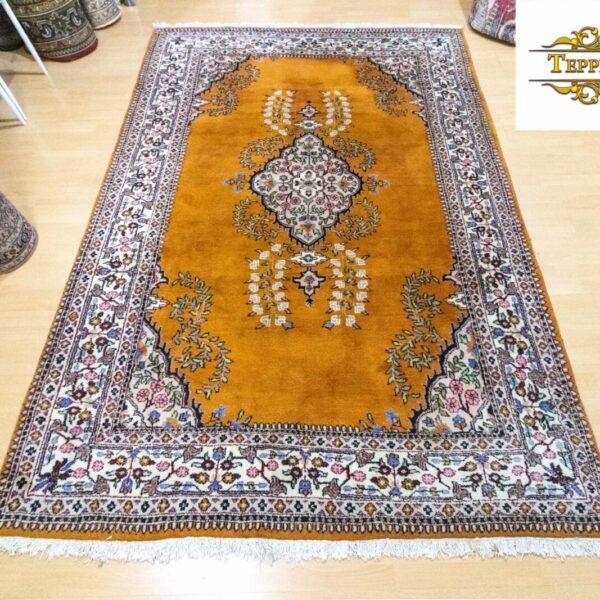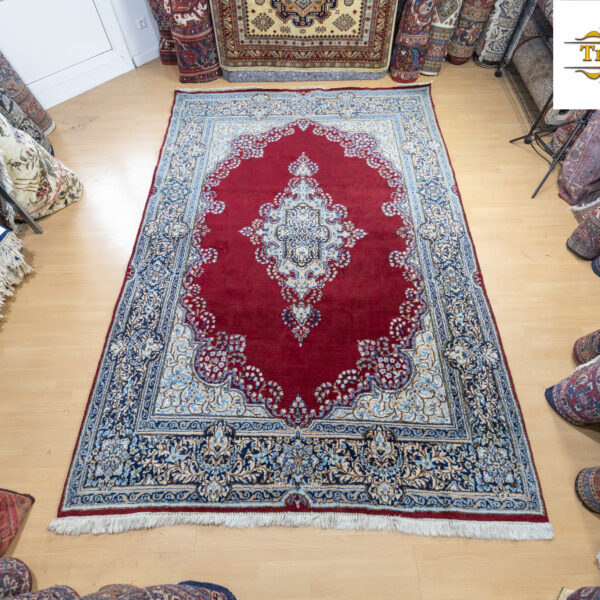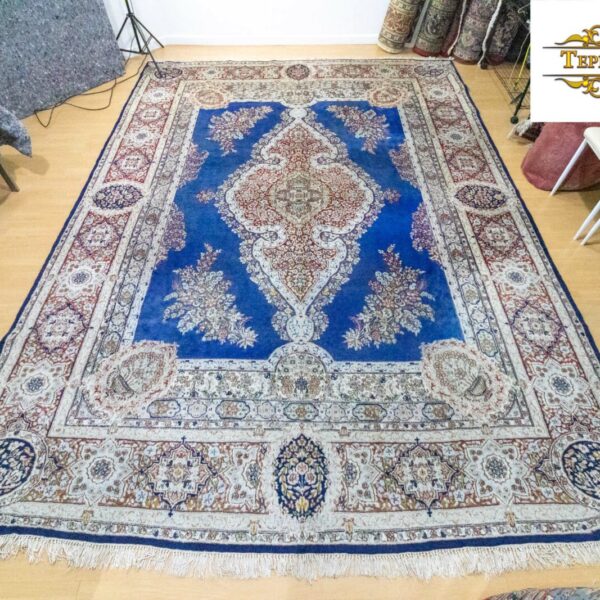Kerman carpets
Kerman carpets (sometimes "Kirman") are one of the traditional classifications of Persian carpets. Kerman is both a city and a province in south-central Iran, although the term sometimes describes a type that may have been created elsewhere. Kerman rugs are valued for a wide variety of designs, a wide range, use of natural dyes and fibers, excellent tensile and abrasion resistance, and expert color combinations.
Typical manufacture uses an asymmetric knot on cotton bases, but rare examples may include silk fleece or part silk or silk bases with wool fleece.
Due to the enormous demand for carpets made in Kerman, and the complex demographics of that demand, a surprising variety of styles and designs have been produced. Some Kerman rugs were woven explicitly for western money buyers, others for local consumers with very different tastes.
The damask rose is the most popular motif in Kerman rug designs, particularly in the Sabzikar Ravar and Gol Sorkhi (Red Rose) rugs. Other well known motifs are “Ghab Ghora'ani”, “Setooni”, “Ghabi”, “Kheshti”, “Saraam Atiyeh”, “Jangali”, “Shekargah” and “Lachak-Toranj”. Antique Kerman rugs often use the Toranj pattern with delicate edges and lines. The floral motifs woven into Kerman carpets in the 19th century are derived from the motifs of Kerman cloths, which were also made in Kerman at the time.
A special variant of the Kerman carpets is the Lavar or Ravar Kerman. Produced in the village of Ravar near the town of Kerman in the Northern Region, these rugs are particularly noted for their fine texture and elegant, classically derived design with continuous formats and central medallion. Most Ravar or Lavar Kerman rugs contain a signature, that of the weaver or the person for whom the rug was woven.
Pot rugs, a distinctive type of 16th- and 17th-century Kerman rugs, feature an all-over design of stylized flowers and oversized palmettes with pots set throughout the field.
Kerman rugs from the 18th century and later very often use "lattice" motifs, with the central field divided by a lattice pattern, creating many small compartments. A notable illustration is a rug that belonged to William Morris and is now on display in the Victoria and Albert Museum.[1] All kinds of drawings were made after Kerman, including large figurative ones. The Victoria and Albert Museum in London has a 1909 carpet with a design copying a painting by 18th-century French artist Antoine Watteau.
Modern Kerman rugs made for Western markets are often woven in soft, light colors such as amber, pink and grey-blue. You can use Western motifs such as stripes and various repeating patterns, as well as more traditional pot and garden themes, animal shapes, and pictorial designs.
Technology
May Beattie defined seven classes of Kerman carpets and identified a unique structure he called the "vase technique," characterized by three wefts between rows of knots. The first and third are typically wool and high tension, while the second, low tension, is usually silk or cotton. The warp threads are noticeably shifted and the Persian knot is open to the left. This technique distinguishes Kerman carpets from both the Safavid period (1501-1722) and the later period (1722-1834). Most Persian carpets, on the other hand, used the "Turkish knot".
The dyeing process for the Kerman rugs took place while the wool was still piled and before spinning, allowing for a uniform color. The range of Kerman carpets is as bright as it is diverse. Hues can range from ivory, blue and magenta to a more golden and saffron hue.
History
Kerman has been an important center for the manufacture of high quality carpets since at least the 15th century.
In the 17th century, Kerman designers were at the peak of their creativity, and their weaving techniques were so sophisticated that they were unseen in other parts of the Persian Empire. For example, weavers had learned to adjust their looms so that the cotton warps were on two different levels. They then threaded the wefts of wool, leaving some narrow and others curved, giving the rug's surface an instantly recognizable wavy finish
In the 18th century some authors considered provincial rugs, particularly those from Siftan, to be the most valuable of all Persian rugs, partly because of the high quality of the region's wool, known as Carmania wool. Nader Shah, Naser al-Din Shah ordered carpets from Kerman. In the 18th century.
In the 19th century, the town of Kerman had a long history of town workshops, fine wool, master weavers and a good reputation

